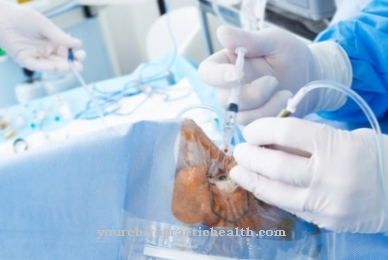Transsexual people often live with a strong desire to live or be recognized as belonging to the opposite sex. For this purpose there is also a gender transformationwhich, with hormonal or surgical options, enables the visual and mental approach to the opposite sex to succeed. Gender reassignment surgery also helps intersex people to better define their own gender.
What is sex reassignment?

A sex reassignment is conceptually understood as the transformation of a biological sex through hormonal and surgical measures. These interventions transform a man into a woman or a woman into a man. Why some people feel an identity different from their body has not yet been fully explained scientifically.
According to some hypotheses, hormones are assigned a major role in this changed gender orientation. Sex hormones ensure appropriate sexual orientation even in the womb. If these hormones work against the gender that has evolved, then the later identification with the opposite sex is established at an early stage. People then feel trapped in a body that is alien to them. These feelings lead some of them to surgical and hormonal sex reassignments, so that as a result they live in their desired gender according to external characteristics.
These sex reassignments lead to infertility. Nevertheless, more and more people are looking for ways to eliminate the disproportion they perceive between their body and their perceived gender. With increasing experience in the field of sex reassignment, it is increasingly possible to help these people effectively.
Function, effect & goals
A sex reassignment is seen by many as a relief. You then have the feeling that you can finally lead your real life. However, sex reassignment surgery is not an easy route. A multitude of individual steps in hormone therapy and surgical interventions are necessary in order to achieve real success. Hormonal therapies work better when those affected are correspondingly younger.
However, the individual effects of the hormones are different for each patient. In male-to-female conversions, female hormones are delivered to the male body. These estrogens cause a decrease in libido and initiate breast growth. The final breast size cannot be influenced by the amount of hormones ingested. It depends on your personal disposition. There is also a female fat distribution, although this is of course limited by the male bone structure. The pitch of the voice does not change, a higher voice can only be achieved through voice training.
Any male hormones that are still present can be inhibited by an antiandrogen. Even after the testicle has been removed, oestrogens - around 2 mg / day - must still be taken. If the hormone therapy only leads to relatively small breasts, a breast augmentation is performed surgically. However, the basic operation in male-to-female transformations is the formation of a vagina from the skin of the penis. With the penis invagination method, part of the glans and corresponding blood vessels are removed and sewn back in as a new clitoris. The urethra is shortened. The testicles and cavernous bodies on the penis shaft are completely removed.
The scrotum is used to shape the labia. Sex reassignment surgery is related to external features only. Internal genital organs cannot be transformed. There are also combined methods, in which the clitoris is also formed from the glans, nerves and vessels of the back of the penis. However, all of the material is used to shape the female sexual characteristics. In this way a deeper vagina can be achieved. If the Adam's apple in the throat is very large, it can be reduced in size by an unproblematic small surgical procedure.
There are also plastic surgical interventions that improve the visual impact as a woman. This includes facial surgeries that narrow the nose or lift the cheekbones. Hips can be padded with insoles. The lower ribs may also be removed to keep the waistline narrower. In woman-to-man conversions, the hormone testosterone has the effect of significantly masculinizing a woman after a short time.
The hair growth increases and the voice becomes significantly darker. Building genitals so that they appear masculine is a complicated process. First, the female sex organs (uterus, fallopian tubes, ovaries) are usually removed, as the hormone treatment increases the risk of cancer. If necessary, a scrotum can be formed from the labia. A penoid is formed from your own tissue and the urethra is lengthened to the tip. There are now various methods of building penis-like muscles.
Risks, side effects & dangers
According to legal regulations, an adult person does not need an operative or hormonal sex reassignment to change his or her civil status. However, many transsexuals feel the need to change their physical status. The associated risks are associated with the operative interventions.
The hormone treatments can also have side effects that cannot be neglected and even have the opposite effect. Antiandrogens can lead to decreased drive, fatigue and osteoporosis. Estrogens can put a lasting strain on the liver. Excessive doses of hormones can be detrimental to the physical health of the body. In addition, there is the psychological stress of sex reassignment.
Hormones also have an effect on the psyche and the risk of mental illnesses, such as depression, is not small. The completed sex reassignment cannot achieve the desired results, which puts a heavy strain on the psyche of the person concerned.












.jpg)



.jpg)










.jpg)
